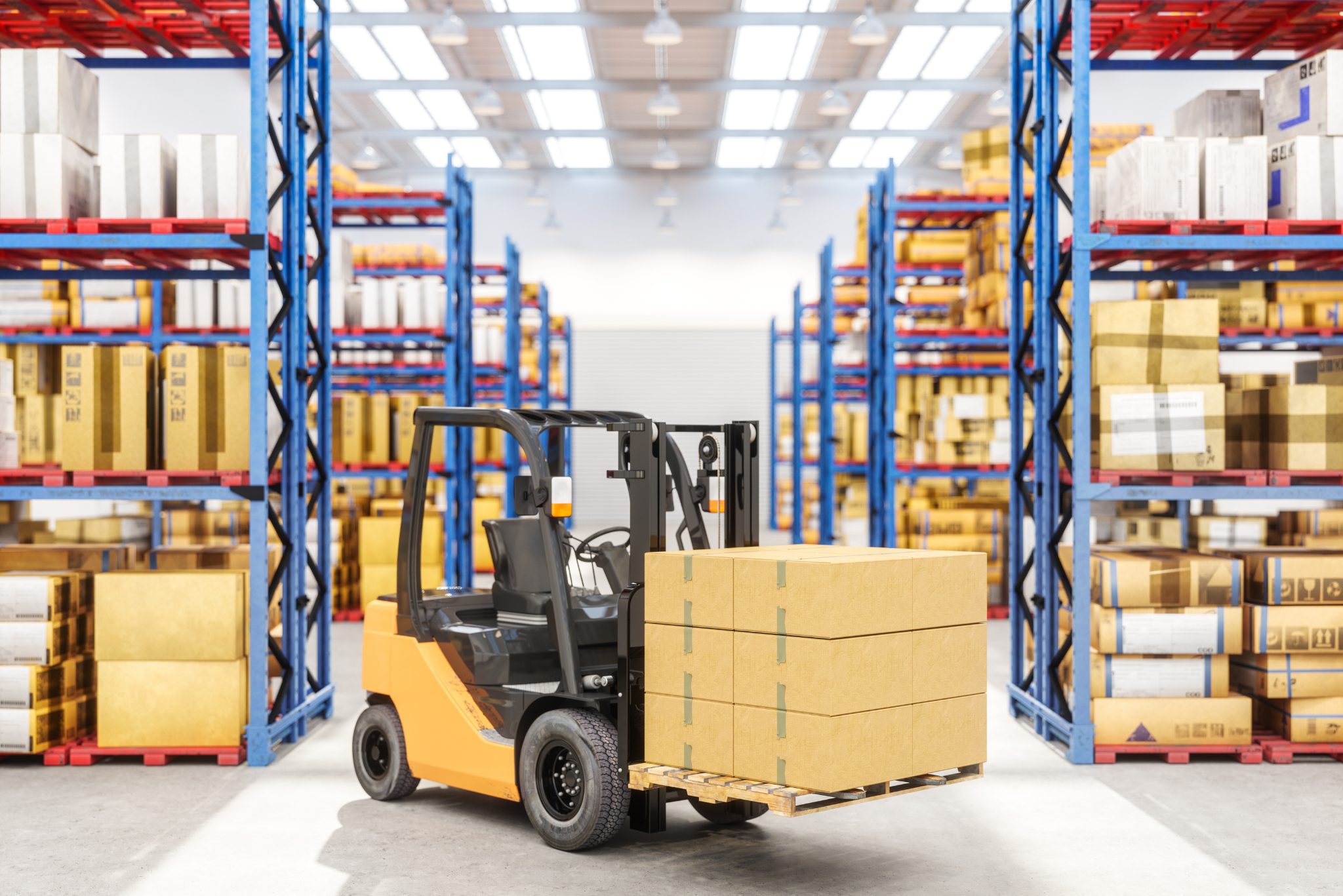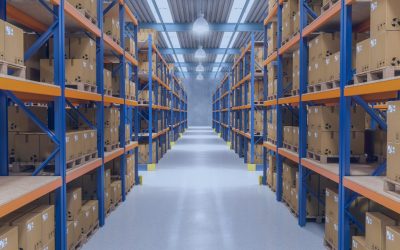Understanding the differences between bonded warehouses and free trade zones is essential to maximizing efficiency and competitiveness.
Choosing the right storage strategy can impact cost, efficiency, and regulatory compliance. Companies that import, export, or distribute goods must be aware of the available options to optimize logistics and minimize taxes. Two key solutions in this context are bonded warehouses and free trade zones, which are often confused but differ in regulation, tax benefits, and operations.
Knowing how they function and which is best suited for specific business needs is essential to leveraging their advantages and improving competitiveness.
Bonded Warehousing: Storage with Deferred Duties
Bonded warehouses are storage facilities where goods can remain without immediate payment of duties and taxes. Importers can delay their tax obligations until the products are withdrawn for sale or distribution within the destination country.
These warehouses are controlled and regulated by the customs authorities of the country where they are located. They allow foreign goods to be stored without paying import duties until they are nationalized or re-exported. This is particularly useful for businesses that need distribution flexibility without incurring immediate tax costs. Additionally, they are often located near strategic ports or airports to facilitate trade.
From an operational and tax perspective, they offer several advantages. First, they allow deferred duty payments until the goods are sold, facilitating inventory management and avoiding premature financial burdens. Additionally, they reduce the financial risk associated with importing products and, in some countries, allow for basic processing, labeling, or repackaging without altering the fiscal status of the merchandise.
Another key advantage is that they can be used for cargo consolidation. This means companies can receive shipments from different suppliers and consolidate them into a single shipment before final distribution. This strategy helps reduce logistics costs and improve transportation efficiency. At the same time, in some jurisdictions, goods can remain stored in these facilities for extended periods, providing greater flexibility in business decision-making.
Free Trade Zones: Tax and Operational Benefits
Free trade zones (FTZs) are designated areas within a country where goods can be imported, stored, processed, or re-exported without being subject to most standard taxes and trade restrictions. They are a key tool for attracting foreign investment and fostering industrial development.
Unlike bonded warehouses, free trade zones provide full or partial exemptions from duties and taxes until the goods enter the local market. Additionally, they allow for product transformation or assembly with significant tax benefits. National and international entities regulate them. Often, they function as logistics and commercial hubs that attract businesses looking to optimize costs and processes.

The benefits of operating in a free trade zone are clear. First, eliminating or reducing import and export taxes is a major attraction for companies seeking to lower costs. Free trade zones also facilitate product transformation and assembly while maintaining tax incentives. Furthermore, their regulatory structure simplifies customs procedures, reducing time and logistics costs for companies with international operations.
Another key aspect is that free trade zones allow the manufacturing of products without subjecting imported materials to taxes until they are sold in the local market. This is particularly useful for electronics, automotive, and textiles, which rely on imported parts and materials. Businesses operating in free trade zones can use these benefits to offer more competitive prices in global markets.
Additionally, free trade zones often feature advanced infrastructure and specialized services. Many include storage areas, administrative offices, production plants, and logistics services within the same facility. This streamlines operations and allows companies to integrate more efficiently into international supply chains.
Which One to Choose? It Depends on the Business Model
Choosing between a bonded warehouse and a free trade zone depends on the specific needs of each company:
- A bonded warehouse is the best option if the goal is to defer duties and maintain distribution flexibility.
- A free trade zone is more suitable for manufacturing, assembling, or processing products with tax advantages.
- Free trade zones may be a better alternative for companies importing large volumes and looking to minimize tax costs before local sales.
- Bonded warehouses can offer a more efficient solution if the business requires consolidating products from different suppliers before final distribution.
- Free trade zones are better if a company needs a complete infrastructure in one location, including logistics and administrative services.
Bonded warehouses and free trade zones both provide strategic opportunities for companies engaged in international trade. The key is understanding their differences and choosing the best option based on each business’s logistics and financial objectives. In any case, having an experienced logistics partner is essential to maximizing benefits and ensuring regulatory compliance.

Combining both solutions may also be a viable strategy for some businesses. For example, a company could use a bonded warehouse to store imported goods without immediate tax payments and then transfer part of those products to a free trade zone for assembly or processing before selling them in the local or international market.
Additionally, it is vital to consider each country’s specific regulations. Some nations offer additional incentives for companies operating in free trade zones, while others may impose restrictions on the use of bonded warehouses. Evaluating the regulatory framework and seeking specialized advice is key to making the best decision.
Aerodoc offers specialized high-value storage, import, and export solutions. Its global network ensures efficiency and compliance.
If you want to learn more about our services, contact our team of experts.
Q&A
- What is the primary difference between a bonded warehouse and a free trade zone (FTZ)? The main distinction lies in tax regulations and operational flexibility. A bonded warehouse allows goods to be stored without immediate duty payments until they are withdrawn for domestic sale or distribution. In contrast, an FTZ provides full or partial tax exemptions and allows product processing, assembly, or transformation with fiscal incentives before entering the local market.
- What are the key operational advantages of bonded warehouses? Bonded warehouses enable deferred duty payments, reducing financial strain and improving cash flow. They also support inventory consolidation, combining shipments from multiple suppliers for streamlined distribution. Additionally, certain jurisdictions permit minor processing activities, such as labeling or repackaging, without altering the goods’ customs status.
- What are the main benefits of operating in an FTZ? Free trade zones offer substantial tax advantages, including eliminating duties or reducing imports and exports. They also simplify customs procedures and facilitate manufacturing, assembly, or product transformation while maintaining tax incentives. Many FTZs provide state-of-the-art logistics infrastructure, making them attractive global supply chain operations hubs.
- How should a company decide between using a bonded warehouse or an FTZ? The choice depends on the company’s business model. A bonded warehouse is ideal for companies looking to defer duty payments while maintaining distribution flexibility. An FTZ is better suited for businesses involved in manufacturing, assembly, or large-scale imports seeking to minimize tax burdens before local sales.
- Can a company leverage both bonded warehousing and FTZs within its supply chain? Absolutely. A strategic combination can optimize logistics and tax efficiency. For example, a company might store goods in a bonded warehouse to delay tax payments, then transfer selected items to an FTZ for assembly or transformation before selling them in the domestic or international market.




